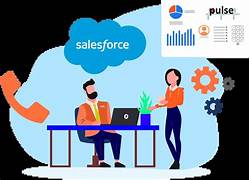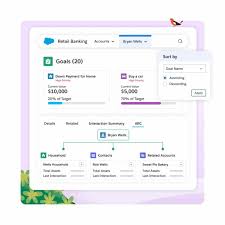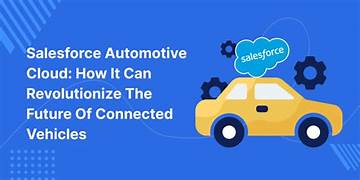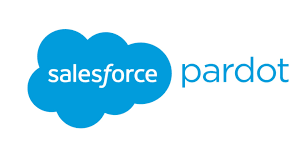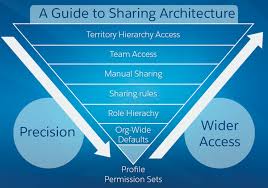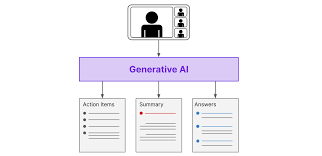Loan Boarding and Approval
Streamlining Loan Boarding and Approval Processes with Salesforce Technology The financial services industry is undergoing a rapid transformation, driven by the need for greater efficiency and improved customer experiences. One area where this shift is particularly evident is in the loan boarding and approval processes. Leveraging Salesforce technology, financial institutions can streamline these essential workflows, enhancing both speed and accuracy while delivering a superior borrower experience. Understanding Loan Boarding Loan boarding is the process of transitioning a loan from its origination phase into servicing. This involves several key steps, including data entry, document management, and compliance checks. Traditionally, this process has been manual, cumbersome, and prone to errors. However, Salesforce offers robust capabilities that allow organizations to automate and optimize these tasks, significantly reducing inefficiencies. Automating Data Entry Salesforce facilitates automated data entry through its customizable forms and integration capabilities. Tools like Salesforce Flow and Apex enable businesses to create workflows that automatically populate fields based on predefined criteria or data extracted from documents using Optical Character Recognition (OCR) technology. This automation reduces manual errors and accelerates the loan boarding process. Efficient Document Management Effective document management is crucial in loan boarding. Salesforce provides a centralized platform for secure storage and easy access to all necessary documents. Features like Salesforce Files enable organizations to manage documentation efficiently, allowing for easy retrieval, sharing, and version control. This streamlined document management ensures that all relevant information is readily available throughout the loan lifecycle. Streamlining Handoff and Approval Processes After a loan is boarded, it must go through a series of approvals before disbursement. The handoff between departments such as underwriting and risk assessment can cause delays if not properly managed. Salesforce’s collaborative tools facilitate seamless communication among stakeholders, ensuring a smooth transition through the approval process. Customizable Approval Workflows Salesforce allows for the creation of customizable approval workflows, enabling organizations to define specific criteria for each stage of loan approval. This flexibility ensures that loans are reviewed by the appropriate personnel based on their complexity or risk profile. Automated alerts notify relevant team members when their input is needed, minimizing bottlenecks and keeping the process moving efficiently. Enhanced Visibility with Real-Time Dashboards One of Salesforce’s standout features is its ability to generate real-time dashboards that provide insights into various stages of the loan process. Stakeholders can monitor key metrics, such as the average time for approvals or the number of loans pending at each stage, through intuitive visualizations. This transparency promotes quicker decision-making and fosters accountability within the team. Seamless Disbursement Process Once loans are approved, the disbursement phase is the next critical step. Salesforce’s integration capabilities with payment processing systems, such as NACHA/ACH solutions, allow organizations to automate fund transfers directly within the platform, streamlining the disbursement process. Automating Payment Processing Automated triggers for payments can be set up within Salesforce, reducing the need for manual intervention. This automation speeds up the disbursement process and minimizes the risk of errors associated with manual data entry during fund transfers, ensuring a smooth and reliable process. Comprehensive Portfolio Management Managing a large loan portfolio requires meticulous tracking of various elements, including amortization schedules, repayments, interest accruals, and fees. Salesforce excels in these areas, offering tools to manage all aspects of a loan portfolio effectively. Dynamic Amortization and Repayment Schedules Salesforce enables the creation of dynamic amortization schedules tailored to individual borrower agreements, easily accessible via custom borrower portals. These portals enhance borrower engagement by providing real-time information about repayment obligations and remaining balances, improving transparency and customer satisfaction. Fee Automation Automating fee calculations within Salesforce reduces administrative burdens and ensures accurate billing according to agreed-upon terms. This feature helps avoid discrepancies and delays, providing a seamless experience for both the lender and the borrower. Risk Management and Collections In today’s volatile economic environment, effective risk management is essential for financial institutions. Salesforce’s advanced analytics and performance rating tools allow organizations to proactively identify potential risks before they escalate, enabling more informed lending decisions. Performance and Risk Ratings By analyzing historical data, Salesforce enables lenders to assign risk ratings based on borrowers’ past behaviors and external market conditions. This data-driven approach supports more accurate and strategic lending decisions, helping to mitigate risk. Effective Collections Strategies For overdue accounts, Salesforce’s task management features automate reminders and follow-ups, ensuring timely communication and effective debt recovery. Maintaining open communication channels with borrowers during the collections process is crucial for preserving relationships and achieving successful outcomes. Conclusion: Embracing Digital Transformation By embracing digital transformation through Salesforce technology, financial institutions can significantly streamline their loan boarding and approval processes. This not only enhances operational efficiency but also positions them competitively in a tech-driven marketplace, delivering the high-quality service that today’s consumers demand. Salesforce’s powerful tools enable institutions to meet the unique needs of their borrowers effectively, ensuring both efficiency and excellence in service delivery. Like Related Posts Salesforce OEM AppExchange Expanding its reach beyond CRM, Salesforce.com has launched a new service called AppExchange OEM Edition, aimed at non-CRM service providers. Read more The Salesforce Story In Marc Benioff’s own words How did salesforce.com grow from a start up in a rented apartment into the world’s Read more Salesforce Jigsaw Salesforce.com, a prominent figure in cloud computing, has finalized a deal to acquire Jigsaw, a wiki-style business contact database, for Read more Service Cloud with AI-Driven Intelligence Salesforce Enhances Service Cloud with AI-Driven Intelligence Engine Data science and analytics are rapidly becoming standard features in enterprise applications, Read more



